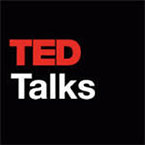A visit to the Duomo of Sienna: looking up versus looking down
The more unsure and insecure we are about our and the world’s future, the more we want to know what lies ahead. Animals sail on instinct and do not need to know too much about what’s in store for them. Humans have the permanent urge to predict for themselves a rosy future. But not only predict, but also foretell what we can or may expect. Depending on our mental state, character or nature and generally independent from our actual living conditions, we see incredible opportunities or no way to get out of the rat hole. It is human nature to permanently think he or she will make it and that is what we want to hear from everybody around us. And that is why fortune-tellers are popular since antiquity.
The big difference between predicting and foretelling is in the outcome.
A prediction may come true or not, there is such a thing as wrongly predicted. Foretelling is a kind of foreseeing, seeing the future as in a movie and because the future is foreseen, the foreteller tells the truth about the future. Predicting is a human quality we all have and an activity we like to entertain. Foreseeing ,we all know, is not possible. One cannot predict to become rich and famous, one can only work and hope for the best.
Can a human be happy without predicting and even foreseeing for him self and may be for his or her extended family nothing but prosperity? Or can we be happy with what we have and live happily without too much expectations about dramatic changes in our miserable state of being?Apparently it is extremely difficult to be satisfied with our daily state of affairs, otherwise why would fortune- tellers and sooth- sayers have such good business ?
Michael Foley in his book (2010) The Age of Absurdity, Why Modern Life Makes it Hard to be Happy, suggests that happiness is both a state and the way to reach that state, the famous pursuit of. Many philosophers think that pursuing happiness makes you unhappy and the more you try the slimmer the chance you get there.
Any doubt about one’s own capabilities or prospects, might have direct impact on your changes to succeed. It may directly lead to complacency and inertia and eventually too much laziness. Excuses why one fails, are a lot easier to come by than arguments why success is unavoidable. The one thing we all need is the talent to convince the outside world that we will succeed no matter what. And as Malcolm Gladwell argued talent is just the desire to work. Getting up in the morning and enjoying the thought that this day will bring the breakthrough, is the key to success and when it turned out to be just another day, start the next day all over again.
It all starts with looking around and not thinking one understands the world . Accept the world as is and as completely irrational. That’s why othercenteredness really counts. Othercenteredness is the key to wisdom and wisdom prepares for luck and without luck there is no pursuit of happiness. Life is forcing one’s hand towards being lucky, preparing the mind for blending luck with wisdom, as in a mixer . A fortune-teller might provide a sense of security about one’s future, just enough confidence to attract good luck and avoid bad luck.
Sibyls are the most famous of all fortune-tellers of antiquity. They were the ultimate resource for the powerful and the mighty to convince the people that they were leading the country, being it Rome or Greece , to victory and prosperity. Sibyls are prophetes, true or false, and there are or have been a total of ten ( or so). To me of all sibyls, five stand out: the ones depicted on the ceiling of the Sistine Chapel in Rome by Michelangelo. The first is the Persian Sibyl, an old woman reading a book; the Erythrean Sybil opening a book;the Delphic Sibyl looking away from a scroll; the Cumaean Sibyl, again an old women looking into a book ; and finally the Libyan Sibyl ,elegantly opening a large volume. According to tradition the Cumaean Sibyl sold the so-called Sibulline books with prophesies to the last king of Rome, Tarquinius Superbus, who reigned from 535-509 BC.
The story says that the Cumaean Sibyl came to Tarquin and offered to sell him the nine sibylline books for three hundred gold coins. She convinced him that her books contained the destiny of the world. But Tarquin was sure she would sell at lower price and refused to buy. After some time and having travelled home, where the books were stored, the Cumaean Sibyl arrived again at the court and offered to sell six books this time, and when Tarquin asked for the price, she said : three hundred gold coins. Tarquin refused again to buy the remaining books he wanted so badly. A third time she returned to him, now with only three books. Tarquin asked what she did with the other six books, she answered : I burned them. Did you at least read them, he asked; No , I didn’t ,she answered. This time, Tarquin bought the last three Sibylline books for three hundred gold coins. Rome flourished as a republic thereafter and rose to power, but all without knowing how it would end.
Rome expanded it’s territories, but never knew it’s destiny: collapse in the end. Could Rome have been saved, when the knowledge of the first six books was preserved and it’s guidance taken at heart?
In Rome human destiny is depicted on a ceiling, in Sienna on a floor. The floor of the Duomo. The Duomo was more or less finished by the 1270s but a major addition was planned by 1339, but today only remnants remain because the Black Death epidemic of 1348 hit the town of Siena, but also major flaws in construction were recognized even before that.
The pavement of the Siena cathedral took about two hundred years to be completed (1369-1562) and started about twenty years after the plague decimated the city. All mosaics of the ten sibyls and the ruling Hermes Trisgemistus were designed and executed in the 1480s. Hermes Trisgemistus formed the starting point for all the mosaics at the middle entrance of the church and this god was an amalgamate of the Egyptian god Thoth ad the Greek god Hermes, both gods of writing, codes and magic.
The sibyls in the church accompany the middle panels of Siena surrounded by its peer cities, the panel of the allegory of fortune and the wheel of fortune.
During the year the whole pavement is covered , or “hermetically ” closed except for a few months in the summer. Nothing make you understand the unity of earth, heaven, fortune and knowledge better than this pavement.
Nowadays we lack the secret knowledge of the sibyls and the sibylline books, all seems to be replaced by rationality of some sort. Was our future once foretold in the six sibylline books lost in fire? And is that why we are so often in the dark about so much?
For the Siena Duomo mosaic makers and their sponsors in the 14th-16th century the times of 2011 represent an unimaginable future far away and far ahead. These Renaissance men and women were fortunate enough to have at least Hermes and the Sibyls to guide them into the future and to foretell their destiny. But what do we have that makes us understand and may be even foresee the day of tomorrow? So much seems lost that we in the 21st century might have even no clue about what is behind us, like the Siena of the mosaic makers.
Monterchi
September 22, 2011




